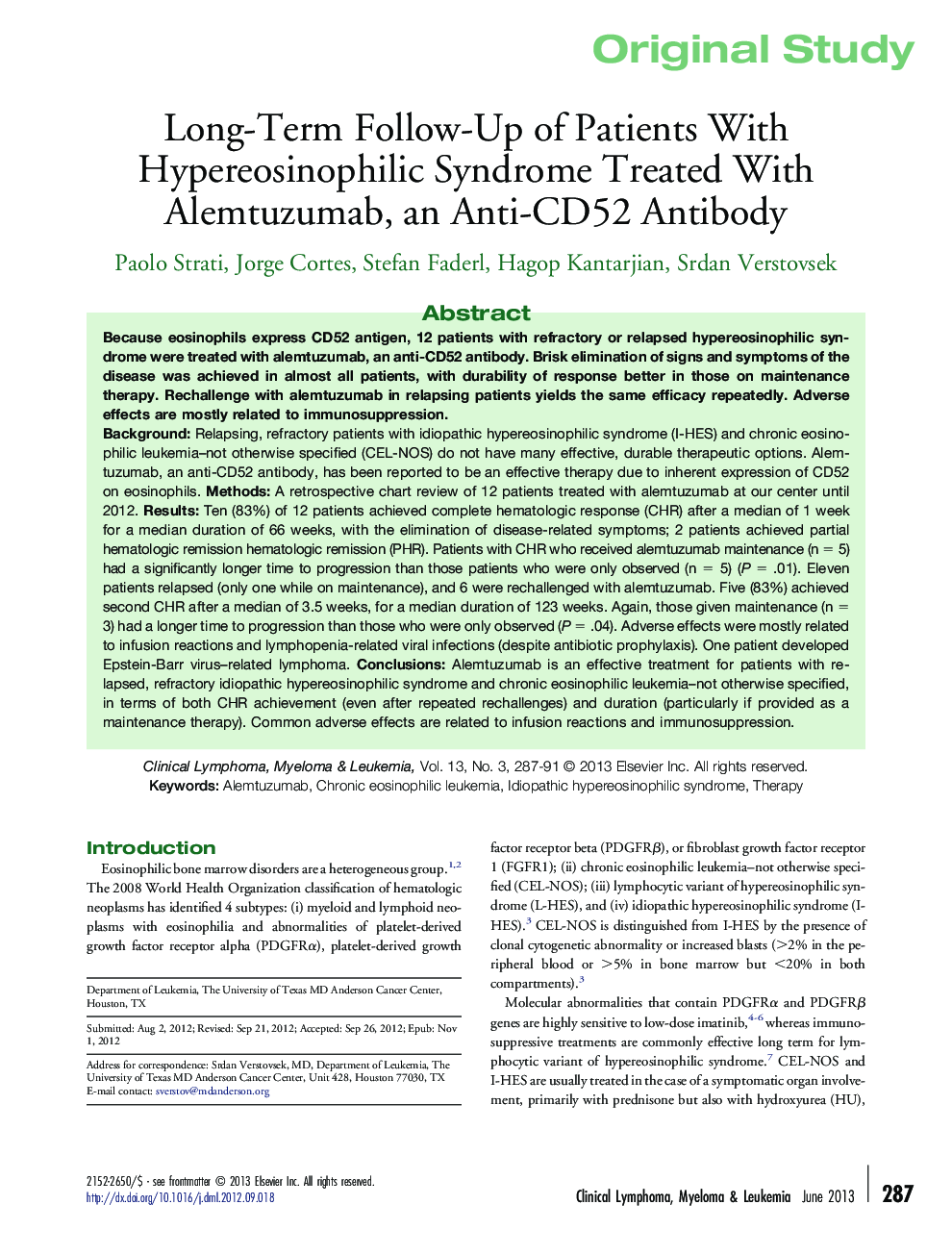| Article ID | Journal | Published Year | Pages | File Type |
|---|---|---|---|---|
| 2754787 | Clinical Lymphoma Myeloma and Leukemia | 2013 | 5 Pages |
BackgroundRelapsing, refractory patients with idiopathic hypereosinophilic syndrome (I-HES) and chronic eosinophilic leukemia–not otherwise specified (CEL-NOS) do not have many effective, durable therapeutic options. Alemtuzumab, an anti-CD52 antibody, has been reported to be an effective therapy due to inherent expression of CD52 on eosinophils.MethodsA retrospective chart review of 12 patients treated with alemtuzumab at our center until 2012.ResultsTen (83%) of 12 patients achieved complete hematologic response (CHR) after a median of 1 week for a median duration of 66 weeks, with the elimination of disease-related symptoms; 2 patients achieved partial hematologic remission hematologic remission (PHR). Patients with CHR who received alemtuzumab maintenance (n = 5) had a significantly longer time to progression than those patients who were only observed (n = 5) (P = .01). Eleven patients relapsed (only one while on maintenance), and 6 were rechallenged with alemtuzumab. Five (83%) achieved second CHR after a median of 3.5 weeks, for a median duration of 123 weeks. Again, those given maintenance (n = 3) had a longer time to progression than those who were only observed (P = .04). Adverse effects were mostly related to infusion reactions and lymphopenia-related viral infections (despite antibiotic prophylaxis). One patient developed Epstein-Barr virus–related lymphoma.ConclusionsAlemtuzumab is an effective treatment for patients with relapsed, refractory idiopathic hypereosinophilic syndrome and chronic eosinophilic leukemia–not otherwise specified, in terms of both CHR achievement (even after repeated rechallenges) and duration (particularly if provided as a maintenance therapy). Common adverse effects are related to infusion reactions and immunosuppression.
